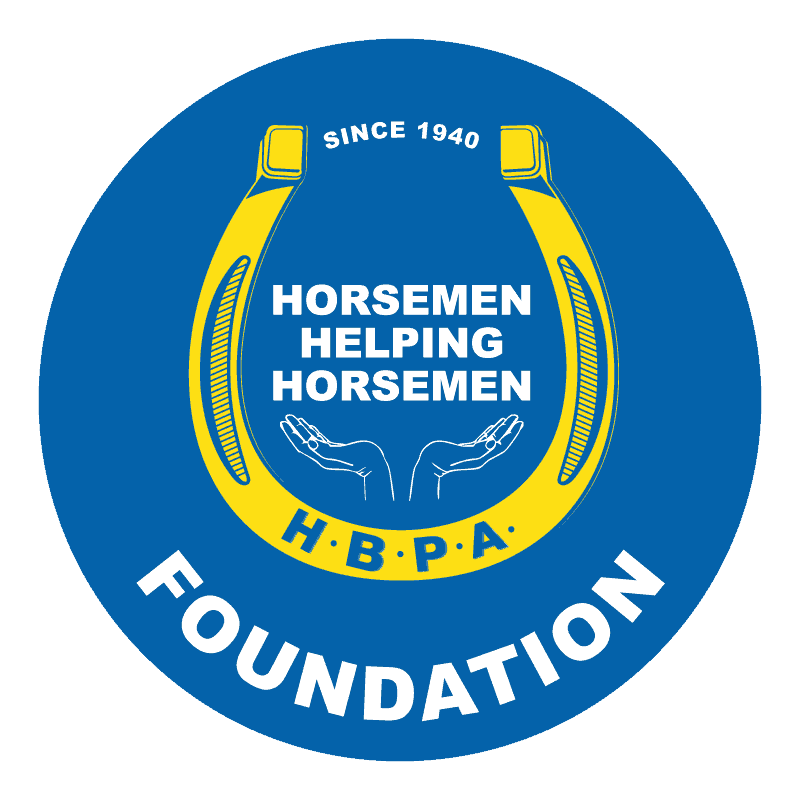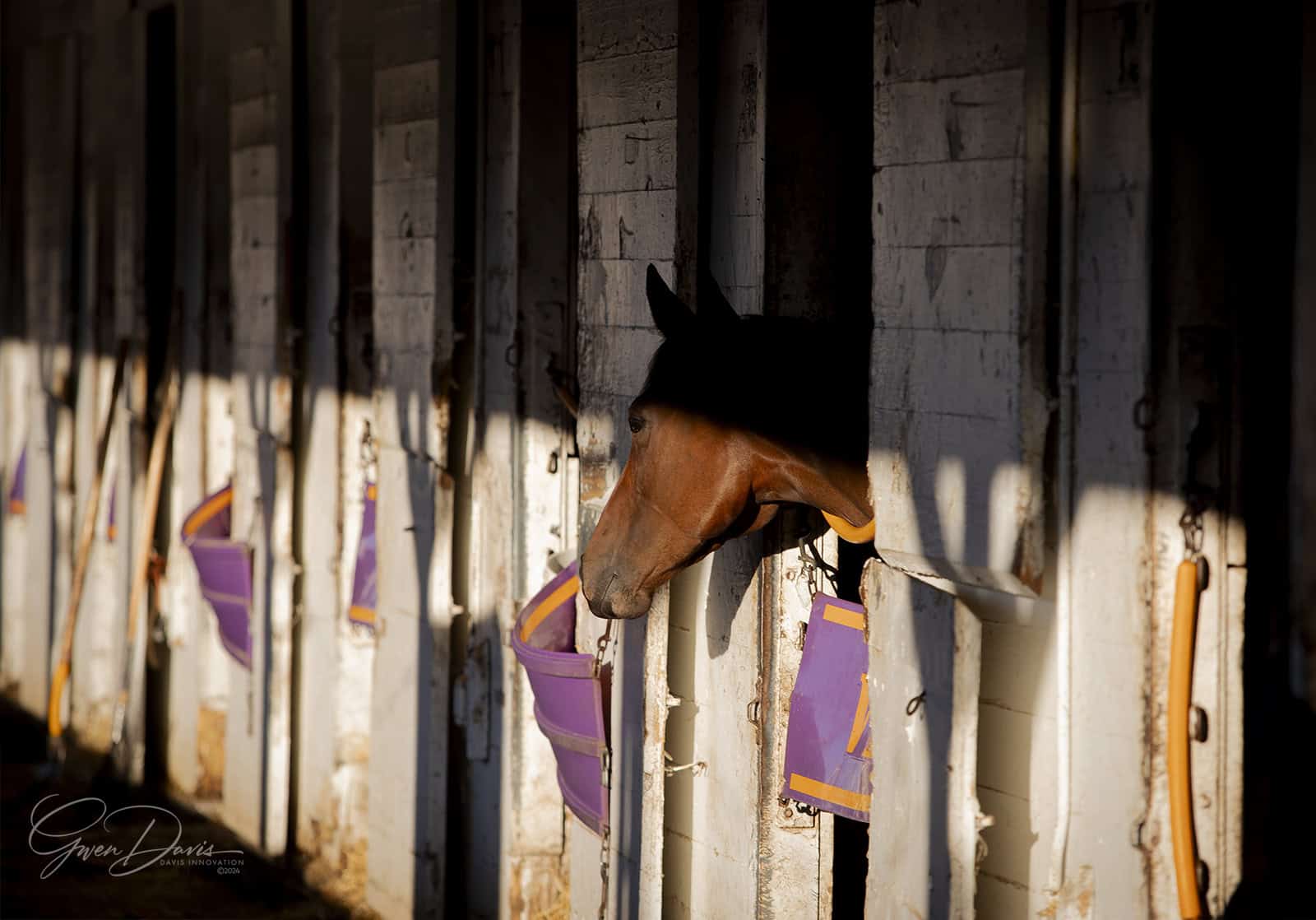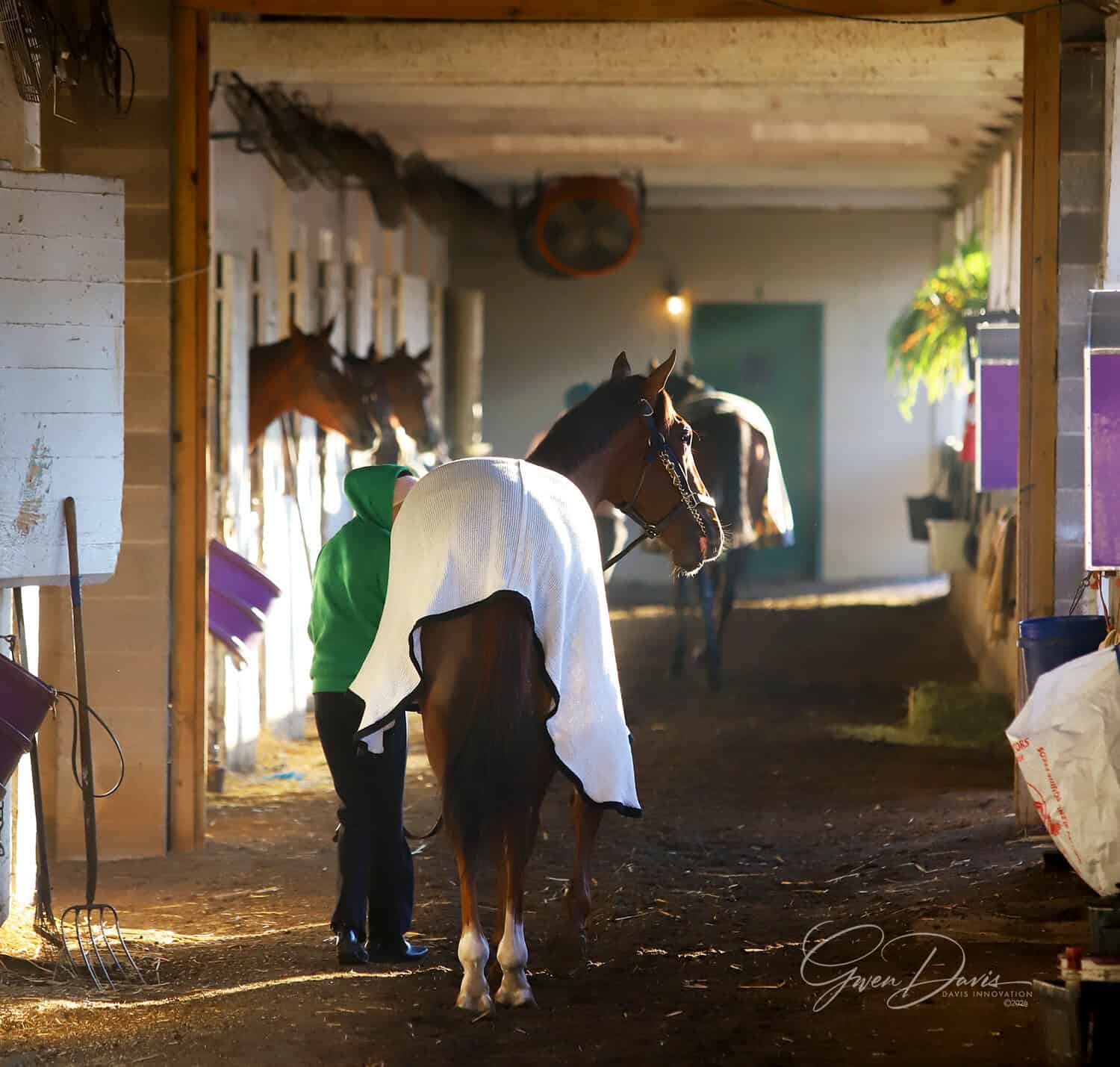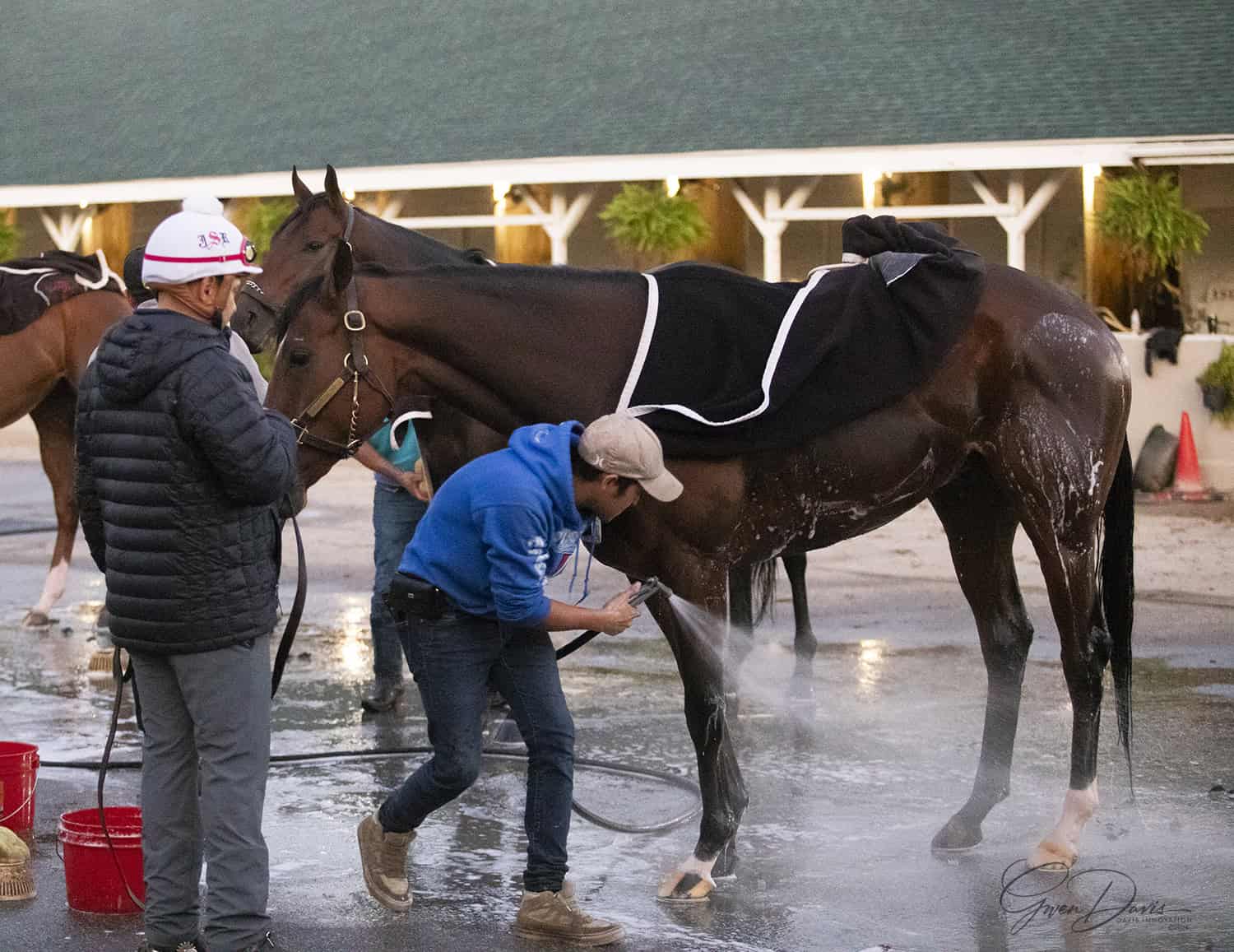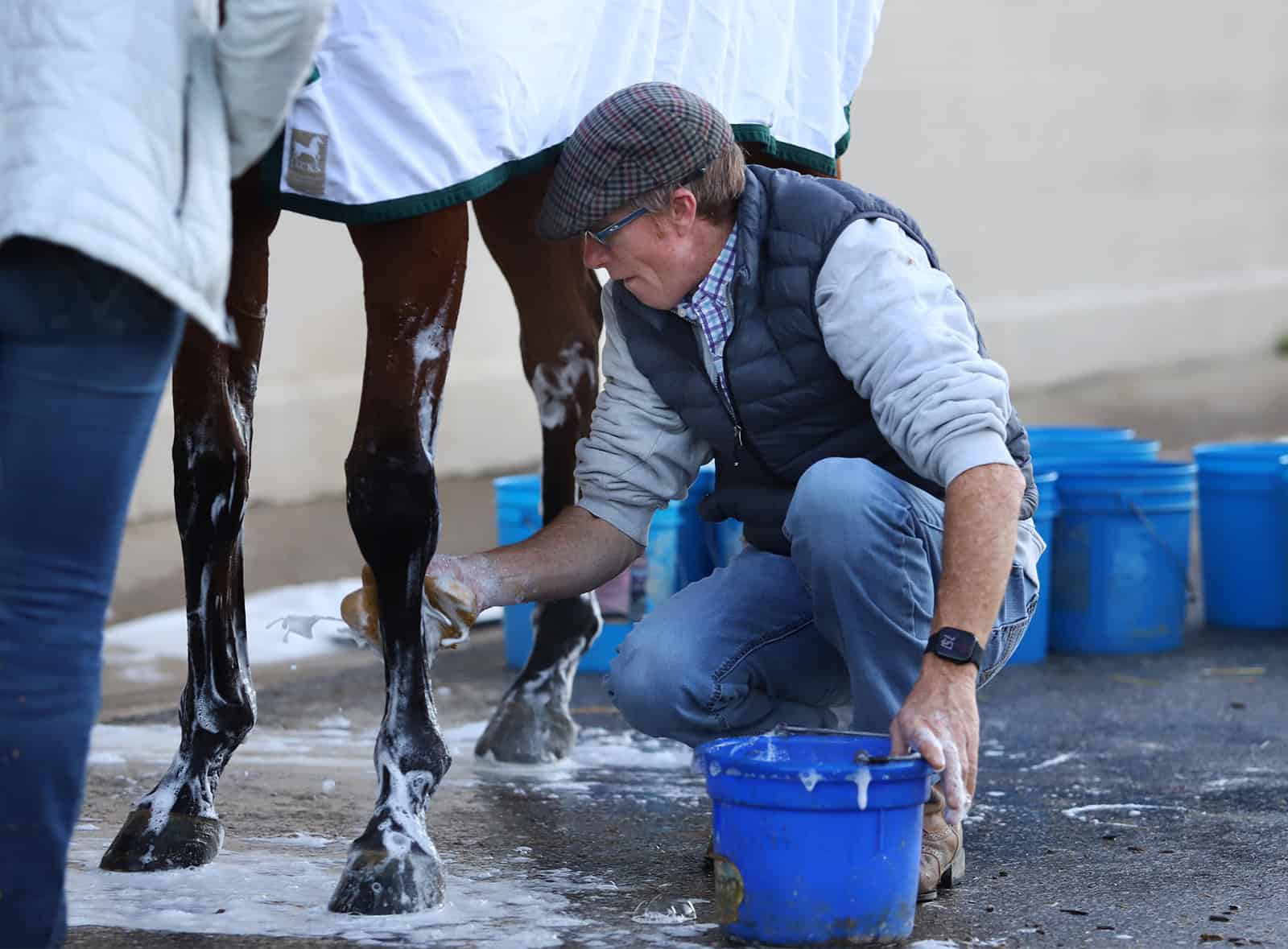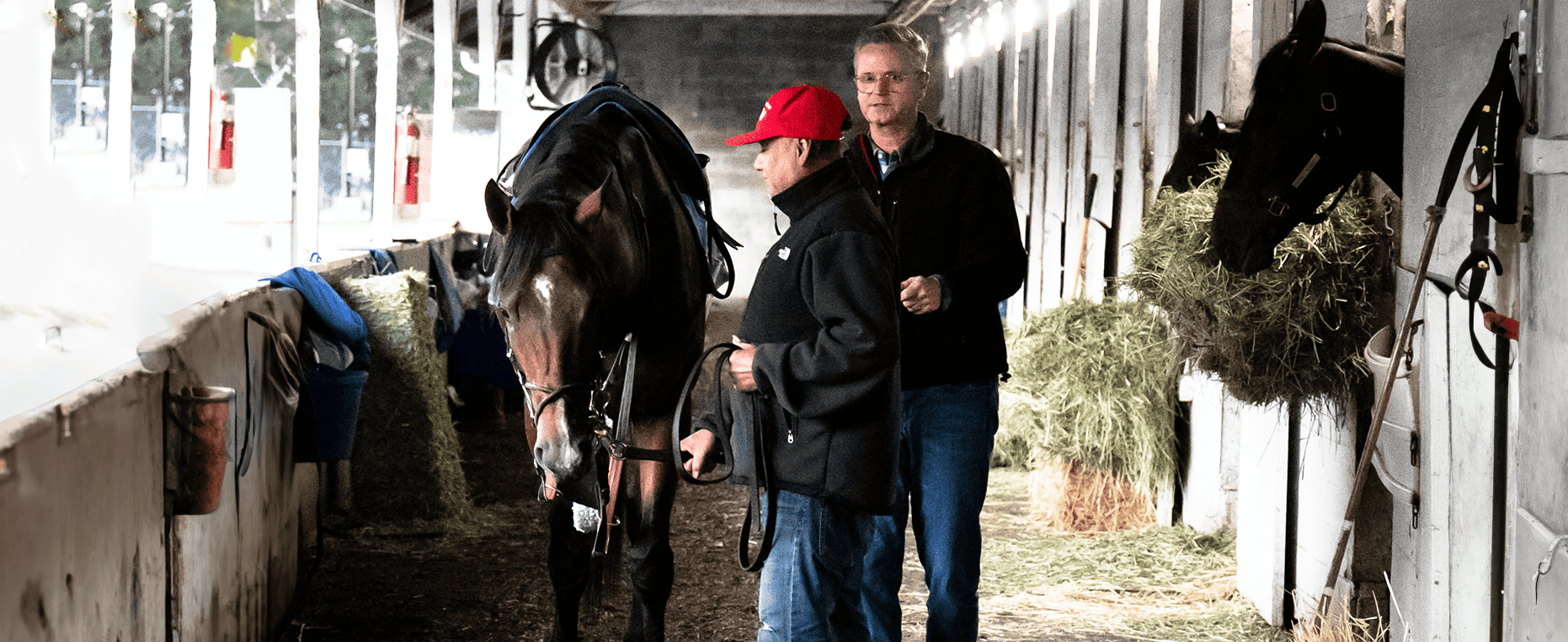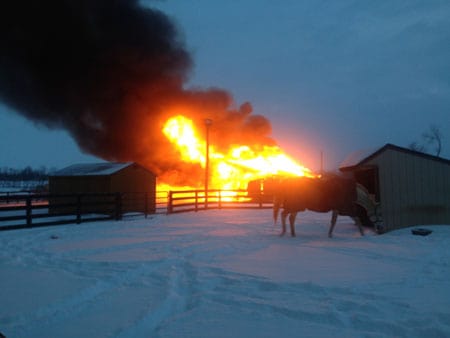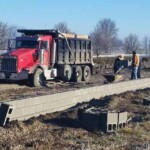
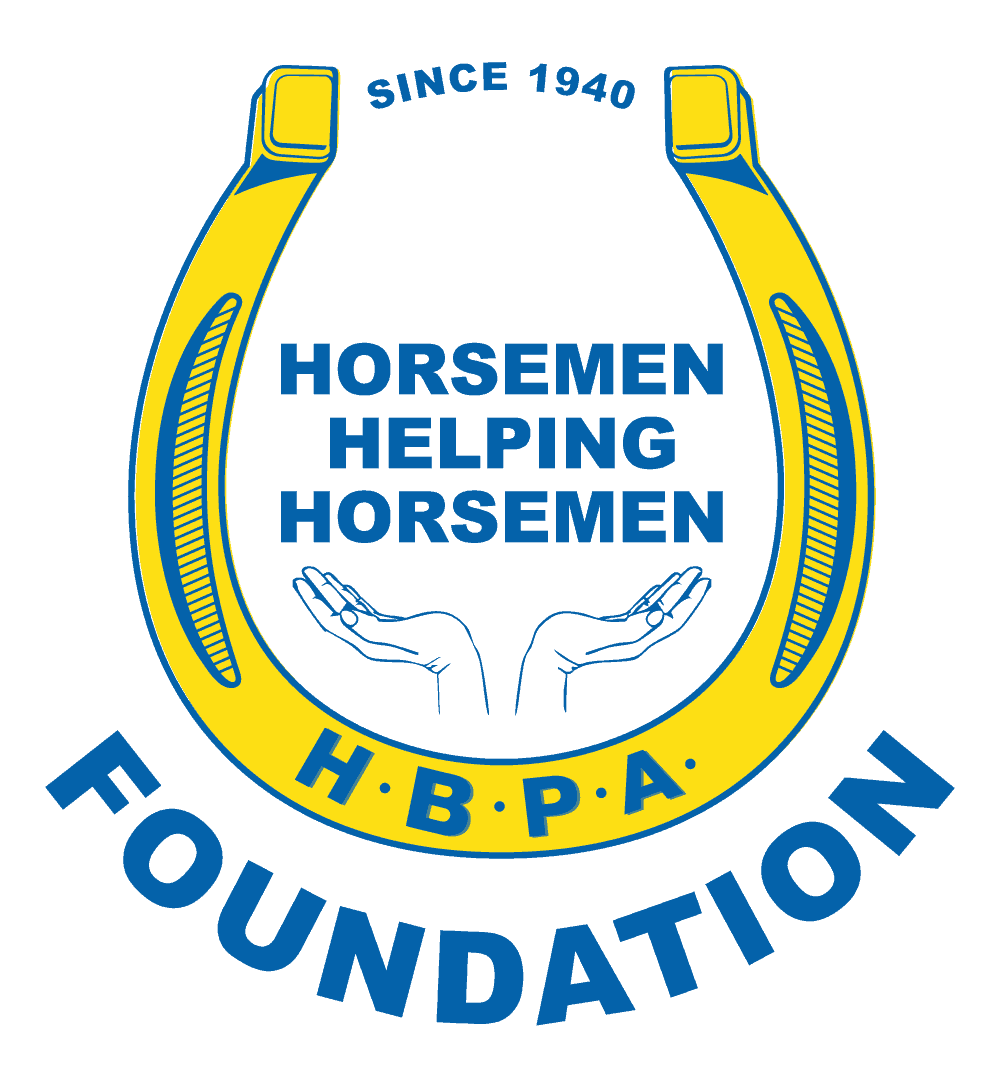
Your Gift Matters
The National HBPA Foundation (NHBPAF), a tax-exempt 501 (c)(3) fund, was developed as a safety net for horsemen when other forms of assistance are unavailable or have been exhausted after disaster strikes. Your donation will directly contribute to those in need of assistance.
How your donation helps:
The National HBPA Foundation (NHBPAF), a tax-exempt 501 (c)(3) fund, was developed as a safety net for horsemen when other forms of assistance are unavailable or have been exhausted after disaster strikes.
When the unfathomable happens: Churchill Downs tornado, Hurricane Katrina:
In 50 years on Churchill Downs’ backstretch, trainer William “Jinks” Fires never thought he’d have to worry about a tornado hitting the barn area not far from downtown Louisville.
But in 2011, Fires’ barn was among those severely damaged by a tornado with EF1 strength and wind speeds of 105 miles an hour. It was the latest in disasters Fires’ operation has endured during his long career, including tornadoes at Arlington Park, flooding in the wake of the tornadoes and the fire that burned down Washington Park and killed all the trainer’s horses.
“Anything can happen,” Fires said. “And when it does, you see why the HBPA’s motto is ‘horsemen helping horsemen.’”
Michael Blowen, founder and president of the Old Friends Thoroughbred retirement facility in Georgetown, Ky., was not aware of the foundation until he received a call from National HBPA CEO Eric Hamelback after a fire destroyed one of their barns in January 2016. Money from the NHBPAF and other donors allowed Old Friends to build a state-of-the-art replacement barn.
“They’ve been great to us,” Blowen says of the NHBPAF. “I didn’t even know they existed, and now I do. We’re extremely grateful. It’s not just the money and not just our barn. I think it’s the great acknowledgement of the HBPA that we’re all in this together. It was a great acknowledgement that they think aftercare, in all of its permutations, is valuable. I know the HBPA supports not just us but other organizations as well.”
The day after Hurricane Katrina devastated much of the Louisiana racing and breeding industries, both existing and donated funds were channeled through the NHBPAF to Louisiana horsemen via the Louisiana HBPA. More than $400,000 in cash donations and 160,000 tons of equine and human supplies were raised with the aid of the NHBPAF.
Those were high-profile cases. But the NHBPAF and the National HBPA Assistance Committee – which manages the NHBPA Foundation and reviews assistance requests – continues its work out of the limelight.
When several horsemen stabled at Turfway Park in Kentucky endured a month-long quarantine due to equine herpesvirus (EHV-1) in 2005, they faced the same daily costs of running a racing stable without the possibility of earning back revenue through purses. As in similar quarantine cases, the NHBPAF stepped in to help by subsidizing daily feed costs, in this case covering 91 horses over 30 days.
The NHBPA Foundation more recently helped feed horses after equine herpes outbreaks in Pennsylvania, Iowa and Nebraska. The foundation was there to assist horsemen after flooding in Arizona.
“When things happen to us that are beyond our control, it’s a relief to know that the NHBPA Foundation is there to help, especially with financial assistance, what we tend to need most,” said trainer Chuck Simon, a respected horseman who passed away at age 57, worked in various roles in horse racing, starting as assistant racing secretary at Yonkers Raceway before transitioning to Thoroughbreds under top trainers. He began training on his own in 1999, saddling multiple graded stakes winners, earning over $11.2 million.
The National HBPA Foundation (NHBPAF), a tax-exempt 501 (c)(3) fund, was developed as a safety net for horsemen when other forms of assistance are unavailable or have been exhausted after disaster strikes.
Eric Reed: “I didn’t know the HBPA did things like this.”
In a nightmarish scenario early the morning of December 18, 2016, a fire caused by a lightning strike at Mercury Equine Center in Lexington, Kentucky, destroyed one of the barns and left 23 Thoroughbreds dead. Quick-acting employees were able to save 13 horses, but the devastation was overwhelming.
“We had our young horses here; they were our future,” said trainer Eric Reed, who owns Mercury Equine Center. The majority of the horses in the barn were yearlings, but thefire victims also included a 3-year-old filly who had recently won a $100,000 stakes and was scheduled to sell at the Keeneland January sale.
On top of the tragic loss of the horses, Reed lost a significant amount of the center’s extra supplies and tack in the fire. He said the loss of supplies and equipment ran about $200,000, not including the cost to replace the barn, which was estimated at around $1 million. “We lost everything,” he said, explaining that some supplies were in Texas with his string of horses at Sam Houston Race Park and it would take time to transport needed supplies back to Kentucky.
“The Foundation helps provide a safety net for those tough times.”
The National HBPA Foundation quickly set up a fund for Reed and Mercury Equine by matching HBPA-affiliated organizations’ contributions up to $10,000 with the hope that more than $20,000 would be donated overall. The Foundation set up an account for the Reeds at Horse Cents tack shop in Versailles, Kentucky, for the HBPA contributions. That way, Reed could more easily replace necessary equipment and other supplies.
After announcing the fund, National HBPA President Leroy Gessmann said, “We are first and foremost here to help horsemen. In this instance, Eric Reed and his stable have undergone a severe tragedy, a nightmare for any trainer. We are here to help him, as we know he would do for us.”
Having quick access to local funds allowed Reed to keep Mercury Equine operating as they dealt with the aftermath of the fire. “I’ve been so overwhelmed by this,” Reed said. “I didn’t know the HBPA did things like this. “It was very humbling, but it lifted our spirits,” he added, admitting that it had been a bad day emotionally for him when he got the call about the funds from the Foundation. “I didn’t have a lot of time to grieve right after it happened; I had to keep everything going.”
“The Foundation is an important example of our commitment to horsemen helping horsemen,” National HBPA CEO Eric Hamelback said. “Our horsemen are a resilient group, but when a disaster strikes, they may find themselves unexpectedly in need of assistance. The Foundation helps provide a safety net for those tough times.”
“The response of our horsemen time and time again has just been incredible,” Hamelback said. “Contributions from our equine community help us make a difference in the lives and livelihoods of our fellow horsemen and horsewomen across the country.”
He emphasized that while donating to the Foundation at the time of a disaster is important, so too is supporting the Foundation on a regular basis to ensure funds are available when disaster strikes. Donations are tax-deductible and could mean the difference between a horseman being able to stay in business or not.
The National HBPA Foundation (NHBPAF), a tax-exempt 501 (c)(3) fund, was developed as a safety net for horsemen when other forms of assistance are unavailable or have been exhausted after disaster strikes.
Gulfstream: “All of a sudden, their whole world was turned upside down.”
When torrential rains hit South Florida in December of 2009 and flooded much of the stable area at Gulfstream Park, the Foundation stepped in to supplement the efforts of the Florida HBPA. Water levels rose as high as two feet at the track, causing significant damage to barns and grooms’ quarters and necessitating the temporary relocation of some horses.
“The last two years, we’ve had two herpes outbreaks which [the Foundation] helped out with, and that was very much appreciated by the horsemen here, and then they helped again with the Gulfstream flood,” said at the time by Kent Stirling, long-time executive director of the Florida HBPA.
I’d make it: Gulfstream flood,” the late Kent Stirling, long-time executive director of the Florida HBPA, said at the time.
“They try to match what we do, and then we got money from Gulfstream and Calder [Race Course], so we were able to defray some of the expenses for horsemen, but obviously not all of them.”
Stirling said more than 500 horses were affected by the flooding, and although the water receded fairly quickly, it still left considerable damage in its wake.
“A lot of grooms were impacted and lost beds, refrigerators, and other belongings,” he said. “And trainers lost a lot of feed. We tried to replace feed in those particular barns.
Some of the other money we used to help with vanning for horses.” Chaplain Tom LaPointe, who at the time served the Gulfstream-Calder circuit, coordinated much of the relief effort, especially in helping the grooms.
“Thank God that Gulfstream has those nice dorm rooms, but there is still one old dorm and some of the guys like staying in the tack rooms, so some of them on the bottom level lost everything,” said LaPointe. With no place to sleep and nothing to eat or wear, LaPointe focused on meeting the basic needs of the grooms, which sometimes is all that can be done and oftentimes the most helpful and appreciated.
“All of a sudden, their whole world was turned upside down and they needed clothes and food and things like that,” he said. “The money was a tremendous help. I was able to go and get some sandwiches and pass those out to all the guys who had it rough.”
“When something like that happens, and it just destroys so much, sometimes just providing a bed or a sandwich helps make it bearable.”
LaPointe was particularly impressed by the generosity of horsemen, both with their time and money. He saw everyone—grooms, trainers,
owners, local HBPA staff, and track management—working together to help the stable area community.While the money from the Foundation was only a small piece of the puzzle that came together to help horsemen at Gulfstream and in similar situations around the United States and Canada, it can be reassuring to know that it is there when needed. The local affiliates do a lot more than the National HBPA and Foundation]; we just try to lend an extra hand.
The National HBPA Foundation (NHBPAF), a tax-exempt 501 (c)(3) fund, was developed as a safety net for horsemen when other forms of assistance are unavailable or have been exhausted after disaster strikes.
New Mexico: “I’ve never seen a group so in support of one another”
Ruidoso Downs, one of New Mexico’s five horse tracks, faced a devastating double whammy in the early summer of 2024: pervasive smoke from a fast-spreading fire sparked the evacuation of horses, followed days later by heavy rain and flash flooding in the burn scars that damaged the track and forced the cancelation of live horse racing.
The unrelenting smoke destroyed many trainers’ supply of feed, hay and bedding. Some help were left without a place to stay. Such calamities are why the National HBPA Foundation was created, in this instance providing $17,000 in assistance.
“Horses started loading and leaving through the night,” said Pam Sena, secretary-treasurer of the New Mexico Horsemen’s Association. “The Village of Ruidoso closed the roads, and there was only one way out. They actually kept that open just for the horse trailers to get out of town. They did that around the clock until we got everybody out who wanted to leave.”
The New Mexico Horsemen’s Association, the state affiliate of the National HBPA, jumped into action. Some horsemen had dispersed with their stock to stables or farms in Oklahoma and Texas. Other horses were relocated to nearby barns and training facilities as well as Sunland Park and Zia Park.
“We bought hay, grain, shavings and various supplies and had them sent to the places where the horses were safe, so we could help the horsemen,” Sena said. “The only thing we required was that if you were at a private barn or something, just send us your receipts of your expenses. We gave it about 90 days, and we got about 20 hardship applications. We got all our bills from the local places and with the contributions of the Foundation, as well as our own horsemen’s association and donations from other HBPA affiliates and individuals, we were able to pay out everything. We verified everything and then we distributed the money.
“This was from the fire. About four or five days later, everybody returned and sure enough, we started getting flooding and it came right down where the fire had been. Eventually, they moved the meet to Albuquerque.”
The New Mexico Horsemen’s Association rejoined the National HBPA in 2021.
“In our present situation, we probably couldn’t survive without them,” Sena said, referring to efforts by New Mexico’s racetrack owners and the state racing commission to kill the New Mexico Horsemen’s Association after the horsemen’s organization filed suit to prevent purse money from going toward track expenses. “They have helped us in various ways. The way it’s ‘horsemen helping horsemen’ is unbelievable. We’ve been back and forth with membership and non-membership over the years. Right now, I don’t care if our office is closed and we’re down to our last dime, we will stay in the HBPA because of its support.
“The foundation is remarkable. I’ve been involved in various horse-related organizations throughout the state. I’ve never seen a group so in support of one another and the betterment of thoroughbred horse racing.”
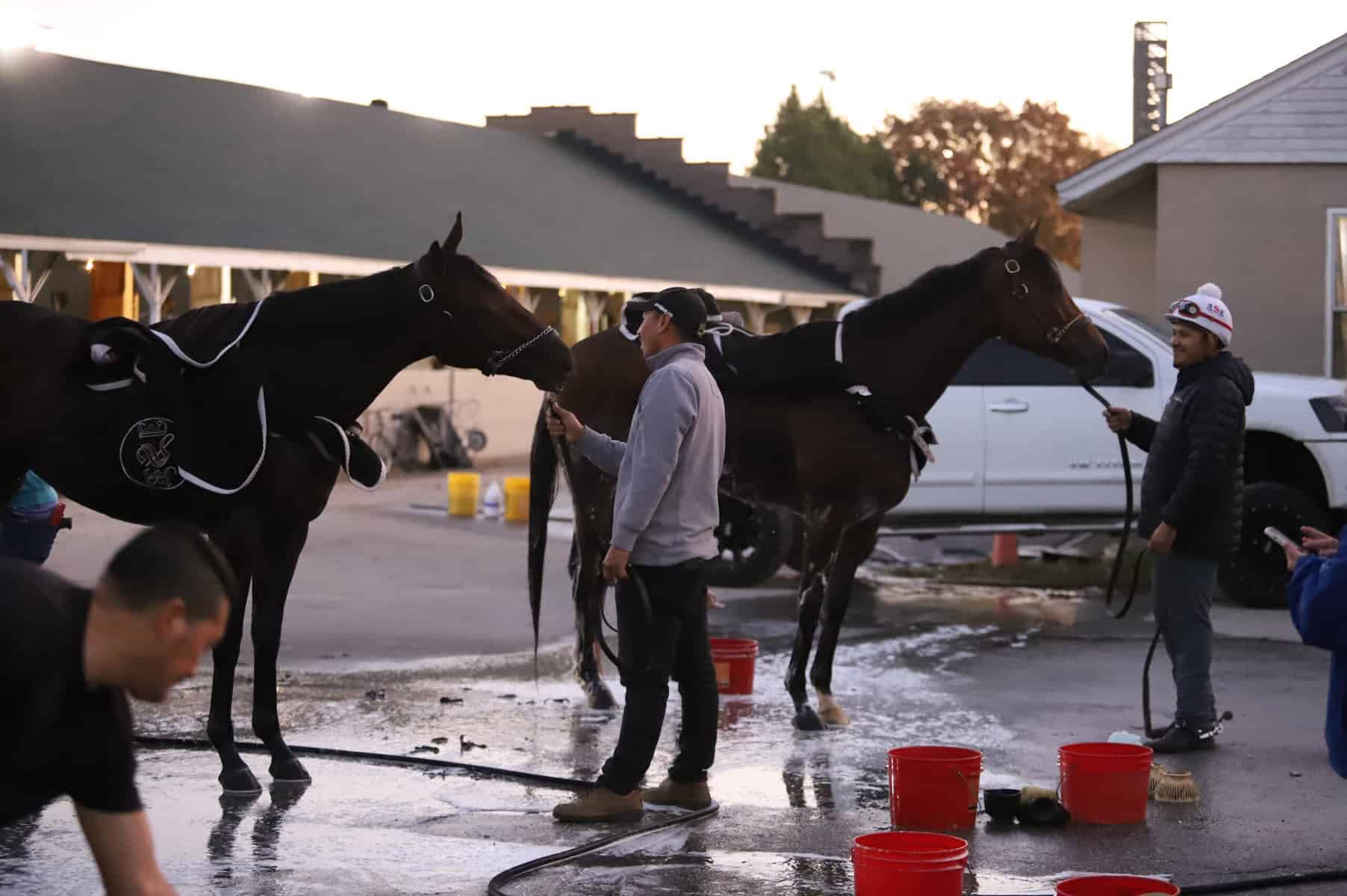
About HBPA
Today there are approximately 29,000 owner and trainer members throughout the United States and Canada focused on a common goal — the betterment of racing on all levels and collectively adopting the following mission statement: – We are committed to the future of horse racing; – We are horsemen who have one horse and a dream; – We are horsemen who spend millions of dollars; – We are horsemen who race throughout the country; – We are horsemen who represent different breeds of race horses; – We are owners, breeders, and trainers. Big and small, young and old; from one end of the country to the other — we horsemen are the HBPA. We are Horsemen Helping Horsemen.
